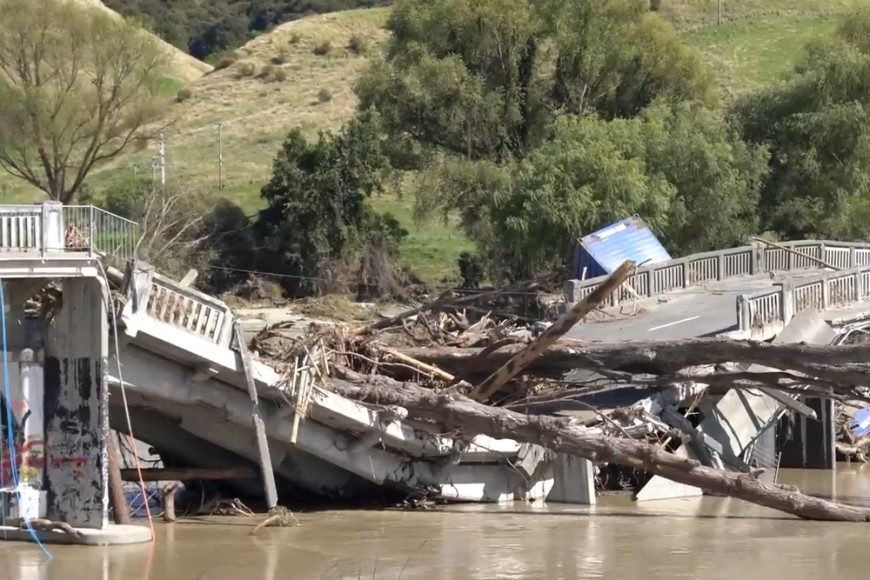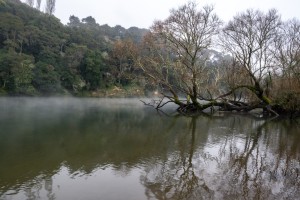Ka mau tonu ngā taonga tapu o ngā matua tūpuna, koinei ngā taonga i tuku iho, ngā te Atua
Hold fast to the treasures of the ancestors, for they are the treasures that have been handed down to us by God.
Kairangahau Māori Jade Hyslop leads He Awa Ora, He Tāngata Ora, a project investigating how the study of river shapes and patterns can help Māori-led catchment restoration strategies. “It’s about how that knowledge and insight can support community-led efforts to restore rivers in response to climate change in ways that are relevant and that align with iwi and hapū aspirations and vision,” she says.

A bridge in the Hawkes Bay region damaged by slash brought down in Cyclone Gabrielle.Image: Geoff Mackley
Jade’s research has explored the links between sediments, water and vegetation across river catchments.
“As tangata whenua we think of awa as living beings. They are our tīpuna who we have an obligation to care for and protect, and who will look after us in return, as well as future generations,” she says.
Jade adds the project acknowledges both mātauranga Māori and science to find solutions.
“He Awa Ora, He Tāngata Ora considers how Māori have come to know and continue to know their awa, through mahinga kai practices, whakapapa connections, waiata, whakataukī, pūrākau, and many other rich sources of mātauranga. We are also interested in exploring how science can be better used alongside this mātauranga to empower and whakamana kaitiaki involved in river restoration.”
The He Awa Ora, He Tāngata Ora report acknowledges that contemporary river restoration is complex. While fluvial geomorphic tools are useful, they can’t capture the intricate relationships Māori have with the environment, which in turn drives restoration aspirations and practices. The report recommends meaningful river restoration that adheres to Treaty obligations enabling Māori to enact their rights of rangatiratanga, mana motuhake, and kaitiakitanga.

